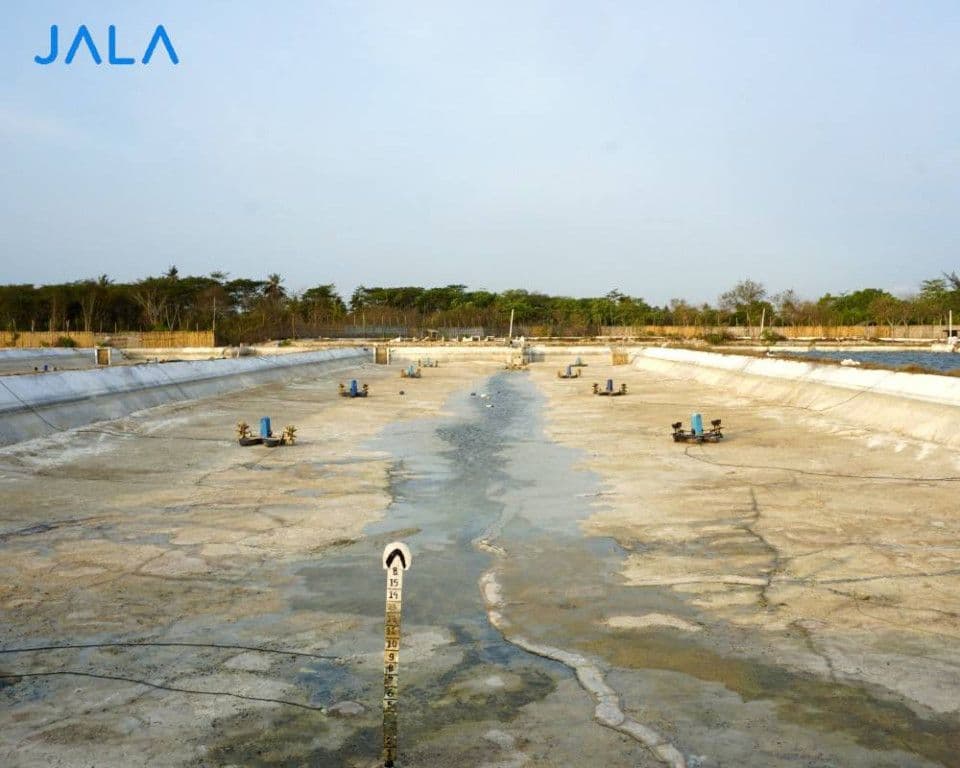
Concrete ponds are one of the pond construction options that are widely used by shrimp farmers. The reason is because concrete ponds are considered more sturdy and durable for cultivating. In addition, concrete ponds also have several advantages, namely reducing land subsidence due to water pressure, breaking the direct interaction between soil and water, and making the sterilization process easier.
Before starting the cultivation with concrete ponds, there are several preparatory stages that must be carried out. This preparation is performed so that the pond is ready for use and allows the shrimp to grow optimally.
The preparation of concrete ponds
The first thing to do in preparing a concrete pond is to design the pond. Adjust the size and shape of the pond with the stocking density of cultivation. This is important so that the shrimp can move freely and grow properly.
Before starting to build, clean and flatten the area that will become the pond. Then construct the walls and bottom of the pond with high quality concrete. An installation of proper aeration systems and water filters is also needed.
Make sure the pond is sterile or free of dirt or chemicals. This step is important so that the quality of the water will be maintained and the shrimp will not get sick. When filling the pond with water, make sure the water is pre-filtered to prevent the risk of dangerous diseases. In addition, provide supporting facilities such as feeding trays, paddle wheels, and biosecurity facilities such as fence or predator deterrents.
Things that must be considered in the preparation of concrete ponds
In preparing concrete ponds for shrimp farming, there are several things that need to be considered. Here's a brief explanation:
Concrete quality
Make sure the concrete used is of good quality and can withstand water pressure. Use a mixture that complies with cultivation pond construction standards.
Effective drainage or water disposal system
Make sure the drainage system in the pond functions properly so that excess water can be controlled and drained. A proper system planning is needed so that water does not stagnate around the pond.
Aeration or water circulation facilities
Install an effective aeration system to maintain adequate oxygen levels in the water. Make sure to keep the water circulation to prevent the accumulation of organic matter that can affect shrimp growth.
Pond safety
Make sure the pond walls are sturdy and durable to prevent leaks or damage. Check the physical condition of the pond regularly and repair it immediately if there is damage or leakage.
Waste management
Provide an effective waste management system to treat pond effluents such as shrimp excrement, excess feed and other organic matter. In addition to maintaining water quality, a good waste management system is also part of sustainable cultivation actions.
By paying attention to the important aspects of pond preparation, we can create optimal growth space for the shrimp. Well-designed ponds, adequate facilities, plus effective cultivation management will further support the success of cultivation.
References:
Ayinla, O.A., Anyanwu, P.E., et al. 2010. Culture trial of (Peneaus) Penaeus monodon in concrete tank
FAO. 1986. Shrimp Culture: Pond Design, Operation and Management





